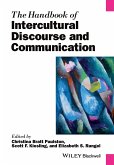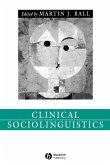This volume presents the results of several decades of inquiry into the social origins and social motivation of linguistic change. It includes the first complete report on the Philadelphia project designed to establish the social location of the leaders of linguistic change. These findings are developed further on the basis of a broad range of sociolinguistic studies in the 1980s and 1990s, as well as the recently completed Atlas of North American English. Successive chapters on social class, neighborhood, ethnicity, gender, and social networks delineate the leaders of linguistic change as women of the upper working class with a high density of interaction within their neighborhoods and a high proportion of weak ties outside of it. Detailed portraits of individual leaders show that the women who lead linguistic change are distinguished from others by their general pattern of deviation from established norms of conformity. Mathematical models are developed to account for the linear incrementation of change in progress, and the transmission of change across generations.
"A fine piece of qualitative sociolinguistic work that crowdsdecades of research into the social motivation of phoneticvariation and change in some American English dialects... It willalso provide rich methodological guidance and material data forscholars interested in the social underpinnings of sound change."Multilingua
"William Labov's work is the cornerstone of quantitativesociolinguistics, and his pre-eminence in the field is assured fornow and for some time to come. He has taught a whole generation ofscholars the skills of careful and accountable fieldwork and ofanalysing linguistic data collected in the field, and in thisrespect his work has been inspirational." Journal ofLinguistics
"It was the unanimous decision of the Committee to award thisyear's Leonard Bloomfield Book Award to Labov's book. TheCommittee feels this book is a landmark in the study of languagechange. It not only presents a coherent and compelling account ofthe internal mechanics of phonological change, but successfullyintegrates this account with theoretical advances in grammaticaltheory, sociolinguistics, and dialectology, as well as historicallinguistics. Labov's scholarship in this work is unsurpassed andranges from a proposed solution to the Neogrammarian controversy,to an account of the changing dialect situation in the UnitedStates, to proposals for applying the theory of lexical phonologyto the explanation of a set of historical paradoxes, and toexploring the limits of functional explanation."LSA
"This is a book that anyone interested in social factors inlanguage change will want to read." Journal of Multilingual& Multicultural Development.
"William Labov's work is the cornerstone of quantitativesociolinguistics, and his pre-eminence in the field is assured fornow and for some time to come. He has taught a whole generation ofscholars the skills of careful and accountable fieldwork and ofanalysing linguistic data collected in the field, and in thisrespect his work has been inspirational." Journal ofLinguistics
"It was the unanimous decision of the Committee to award thisyear's Leonard Bloomfield Book Award to Labov's book. TheCommittee feels this book is a landmark in the study of languagechange. It not only presents a coherent and compelling account ofthe internal mechanics of phonological change, but successfullyintegrates this account with theoretical advances in grammaticaltheory, sociolinguistics, and dialectology, as well as historicallinguistics. Labov's scholarship in this work is unsurpassed andranges from a proposed solution to the Neogrammarian controversy,to an account of the changing dialect situation in the UnitedStates, to proposals for applying the theory of lexical phonologyto the explanation of a set of historical paradoxes, and toexploring the limits of functional explanation."LSA
"This is a book that anyone interested in social factors inlanguage change will want to read." Journal of Multilingual& Multicultural Development.








